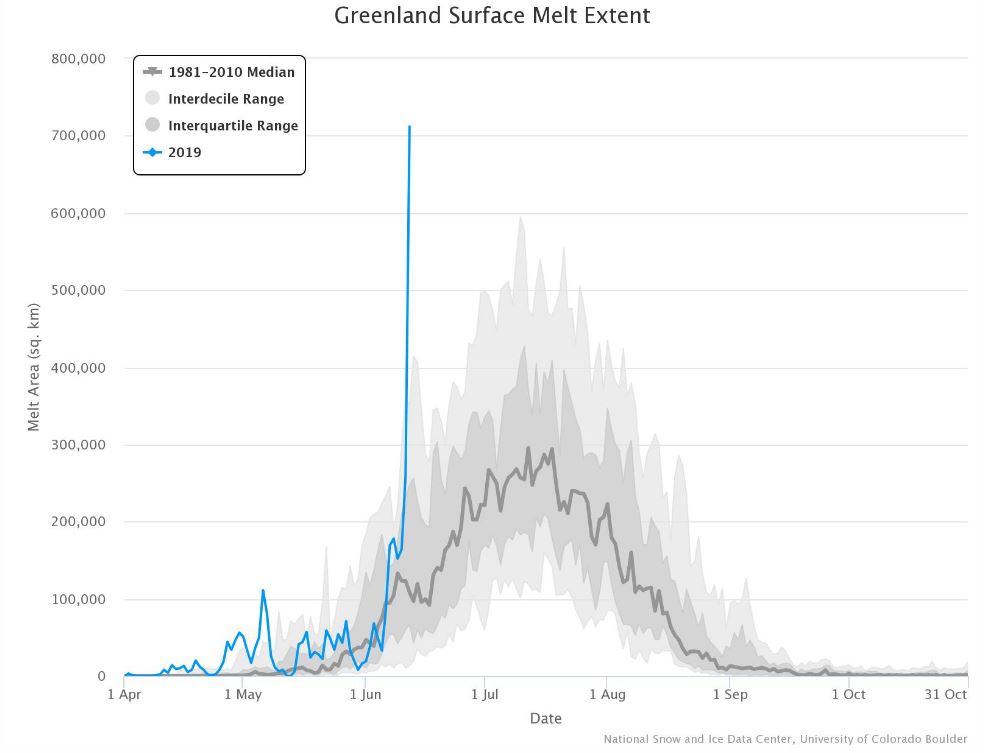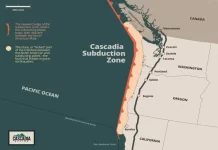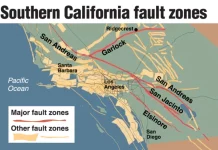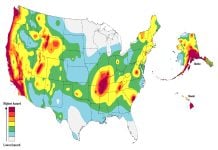While Antarctica shows cooling over the last 10 years, Greenland is experiencing extreme melting, with experts predicting another record year as far as ice loss is concerned.
The country lost more than 2 gigatons – or 2 billion tons – of ice in a single day last week. To put that into some kind of perspective, it is the weight equivalent to 340 Giza pyramids, 80,000 Statues of Liberty or 12 million blue whales.

Two opposite phenomena occurring at both pole. While Antarctica seems to cool down, Greenland melts at unprecedented rates.
The Arctic’s melt season is a natural event that takes place every year, starting in June and ending in August, with peak rates occurring in July. However, the scale of ice loss taking place right now is extraordinary. Experts have already made comparisons to 2012, which saw record-breaking ice loss when almost all of Greenland’s ice sheet was exposed to melt for the first time in documented history.
This year, ice melt began even earlier than 2012 and three weeks earlier than average. What’s more, this “premature” ice loss could exacerbate further loss in upcoming months because of something called the albedo effect.
But the worse is yet to come
The albedo effect refers to the amount of the Sun’s energy that is reflected back into space. White snow and ice reflect more of the Sun’s energy into space, essentially cooling the land and preventing further ice melt. In contrast, reduced snow and ice cover means more of that energy will be absorbed, temperatures rise, and even more ice will melt – it’s a vicious cycle.
Yesterday (13th June), we calculate #Greenland #icesheet lost more than 2 Gt (2 km³) of ice,, melt was widespread but didn't quite get to #SummitCamp which was just below 0°C
— Greenland (@greenlandicesmb) June 14, 2019
The high melt is unusual so early in the season but not unprecedentedhttps://t.co/Ftg0fkC7AK pic.twitter.com/Y4jQ1FoFRZ
Another contributor is likely consistent humid, high-temperature air from the Central Atlantic making its way to areas in Greenland. You remember last winter?
The polar vortex divided in two bringing record temperatures to Greenland too.
“We’ve had a blocking ridge that has been anchored over East Greenland throughout much of the spring, which led to some melting activity in April – and that pattern has persisted,” explained Thomas Mote, a research scientist at the University of Georgia.
Melt periods such as the current one are not unprecedented. Mote noted previous periods in 2012, 2010 and 2007, all major melt years. If these extreme melt seasons are becoming the new normal, it could have significant ramifications around the globe, especially for sea level rise.
[CNN, IFLScience]












